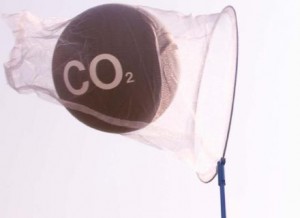With all these coal-fired and fossil-fuel driven power plants in the world the quest for capturing CO2 continues in research laboratories all over the world. Two labs, one at Massachusetts Institute of Technology (MIT), and the second at the Pacific Northwest National Laboratory (PNNL), have come up with new approaches that are cheaper and require little in the way of retrofit for the power generation infrastructure.
The MIT method is based on electrochemical reactions. The PNNL method uses an organic solvent. Right now both have been successfully demonstrated on a small scale in their respective labs. Both need a project-scale implementation to prove that they are economically viable. Both solutions have been published in the journal, Energy & Environmental Science.
MIT uses a method containing amines that bind with CO2. What are amines? Amines are derivative compounds of ammonia in which one or more of the hydrogen atoms gets replaced by a substitute. Also known as alkylamines they have been used in scrubbers to remove hydrogen sulfide in petrochemical plants. Typically amines have been heated requiring lots of energy which makes CO2 capture cost prohibitive. But with the MIT discovery no heating is required. The amines in solution are passed through a device with positive and negative electrodes. As the amines absorb the CO2 they get pulled to one of the electrodes. Both are made of copper and the amine interaction with the copper produces copper ions. These bind more readily with the amines and not the CO2. The amines then get attracted to the opposite electrode and the copper ions are removed. What’s left? The amines which get recirculated and the CO2 which is bubbled off for capture and storage. The process uses far less energy than any existing CO2 capture method currently used in test sites.
PNNL uses an organic solvent to absorb CO2. They then mix the solvent with a slightly warmed hydrocarbon. Then they cool the mixture and repeat the cycle. In cooling the solvent, hydrocarbon and CO2 separate. The solvent recirculates to capture more CO2. The total energy input is so small that any existing power plant could easily accommodate the retrofit.
Considering the general failure of commercial and pilot CO2 capture projects to date, if these two methods can scale they may breathe new life into the effort to capture and sequester carbon economically.








